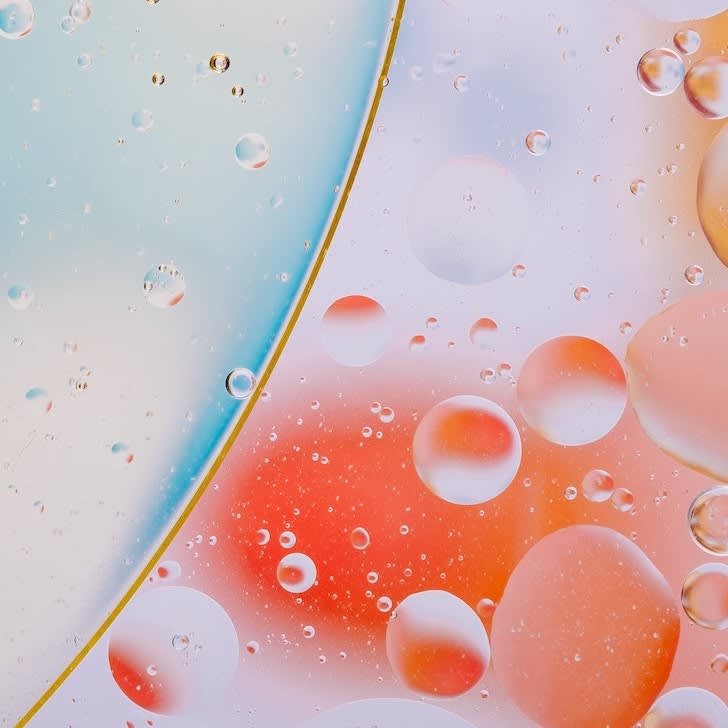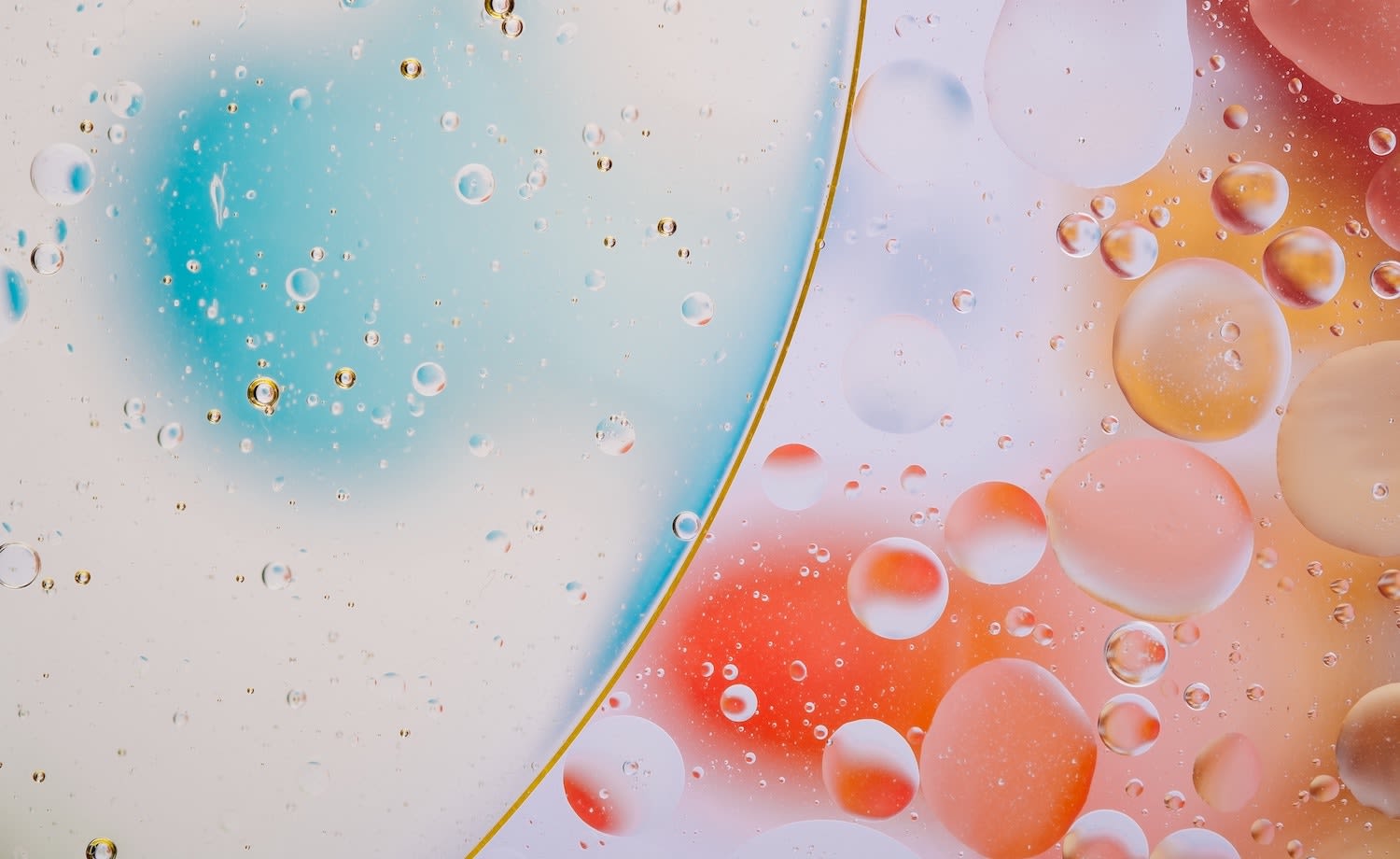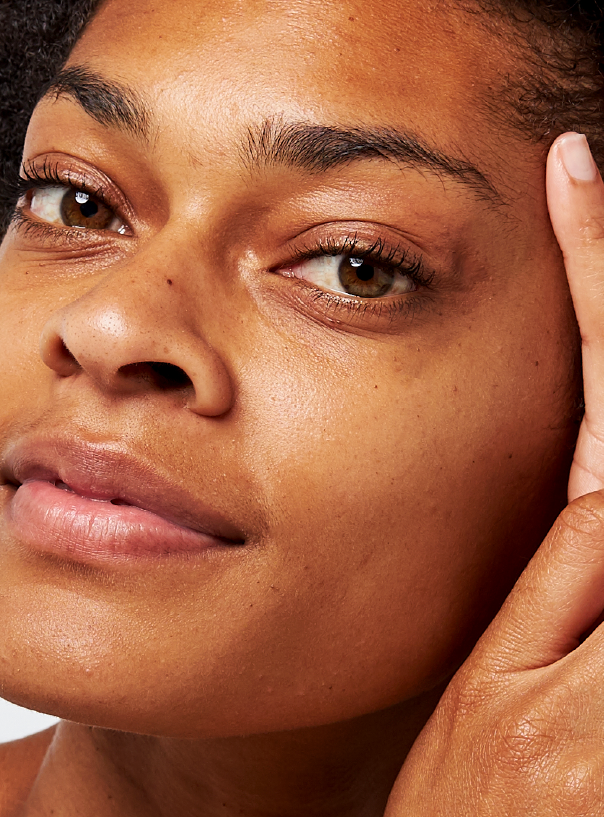Education
Acids 101


SHARE
Education
Acids 101
Medically reviewed by Aimee Paik, MD
Written by Apostrophe Team
Last updated 4/1/2024
According to Merriam-Webster, an acid is “any of various typically water-soluble and sour compounds that in solution are capable of reacting with a base to form a salt, redden litmus, and have a pH less than 7, that are hydrogen-containing molecules or ions able to give up a proton to a base, or that are substances able to accept an unshared pair of electrons from a base.” For the purposes of skincare, it is important to know that an effective acid has a pH of less than 7 and conveys its benefits through chemical exfoliation. By getting rid of dead skin cells and increasing cell turnover, acids help fade hyperpigmentation, brighten, reduce fine lines, and prevent acne.
Alpha hydroxy acids (AHA) – Alpha hydroxy acids or AHAs are a group of organic carboxylic compounds including glycolic acid (from sugar cane), citric acid (from citrus fruit), lactic acid (from milk and pickled vegetables), malic acid (from apples) and tartaric acid (from grapes). Alpha hydroxy acid preparations are recommended for those whose skin is showing signs of ageing. Fine lines, brown marks, and dry spots (actinic keratoses) can improve with regular applications or peels. Glycolic acid may also prove helpful for those prone to acne.
Ascorbic acid (Vitamin C) – Ascorbic acid, or vitamin C, is an antioxidant which, when manufactured into a stable topical formulation, is proven to be effective in protecting against photoaging of the skin. It is available in serums, liquids, creams, and even powder. It is important to note that if the vitamin C is not stable, it will oxidize in solution and may contribute to blackheads.
Azelaic acid – Azelaic acid is a natural material produced by a yeast that lives on normal skin, Malassezia furfur (also known as Pityrosporum ovale). It is used as a topical treatment for mild to moderate acne, and may be combined with oral antibiotics or hormonal therapy. It is useful for both comedonal acne and inflammatory acne.
Beta hydroxy acid (BHA) – Beta hydroxy acids (like alpha hydroxy acids) are organic carboxylic compounds. Their chemical structure differs from AHAs by one carbon atom. Beta hydroxy acids are effective in reducing the appearance of fine lines and wrinkles, and improving overall skin texture, without the occasional irritation associated with the use of AHAs. The most common BHA used in skincare is salicylic acid (see below).
Salicylic acid - In acne, topical salicylic acid helps slow down shedding of the cells inside the follicles, preventing clogging. Salicylic acid also helps break down blackheads and whiteheads.
Hyaluronic acid - Hylauronic acid draws moisture into the skin, causing it to become plump and hydrated. Also used in fillers (for the plumping effect).
Kojic acid – Kojic acid is produced from several different types of fungi. It inhibits and prevents the formation of tyrosine, an amino acid that is necessary for the production of melanin. Limiting melanin production can help lighten the skin and can be useful in treating hyperpigmentation as a result of acne scarring.
Acids can be a useful tool in your skincare arsenal! As with any type of exfoliation, be careful of irritation and scale back if you experience too much stinging or redness. Always listen to your skin and you will be on your way to maximizing your glow!
1. Acid. Merriam-Webster. https://www.merriam-webster.com/dictionary/acid?utm_campaign=sd&utm_medium=serp&utm_source=jsonld. Accessed May 3, 2019. 2. Alpha hydroxy acid facial treatments. Alpha hydroxy acid facial treatments | DermNet NZ. https://www.dermnetnz.org/topics/alpha-hydroxy-acid-facial-treatments/. Accessed May 3, 2019. 3. Azelaic acid. Azelaic acid | DermNet NZ. https://www.dermnetnz.org/topics/azelaic-acid/. Accessed May 3, 2019. 4. Beta Hydroxy Acids in Cosmetics. Beta Hydroxy Acids. https://www.fda.gov/cosmetics/productsingredients/ingredients/ucm107943.htm. Published November 15, 2017. Accessed May 3, 2019. 5. Gotter A. Kojic Acid: Side Effects and Benefits. Healthline. https://www.healthline.com/health/kojic-acid. Published August 17, 2017. Accessed May 3, 2019. 6. Papakonstantinou E, Roth M, Karakiulakis G. Hyaluronic acid: A key molecule in skin aging. Dermato-Endocrinology. 2012;4(3):253-258. https://www.ncbi.nlm.nih.gov/pmc/articles/PMC3583886/. Accessed May 3, 2019. 7. Salicylic acid. Salicylic acid | DermNet NZ. https://www.dermnetnz.org/topics/salicylic-acid/. Accessed May 3, 2019. 8. Topical vitamin C. Topical vitamin C | DermNet NZ. https://www.dermnetnz.org/topics/topical-vitamin-c/. Accessed May 3, 2019.
Like what you just read? Sign up for our email list to get the scoop on skincare science delivered straight to your inbox.

Deep Dives
A dermatologist shares his thoughts on the recent studies about benzoyl peroxide and benzene.
Read More
Education
What is milia?
What is milia? Today, we’re jumping into one type of bump that you may have heard about most commonly in infants — milia.
Read More
Education
Best moisturizer for acne-prone skin
If you have combination acne-prone skin, figuring out which moisturizer is best for your skin might be tough. In this guide, we break down the best moisturizer for combination, acne-prone skin.
Read More